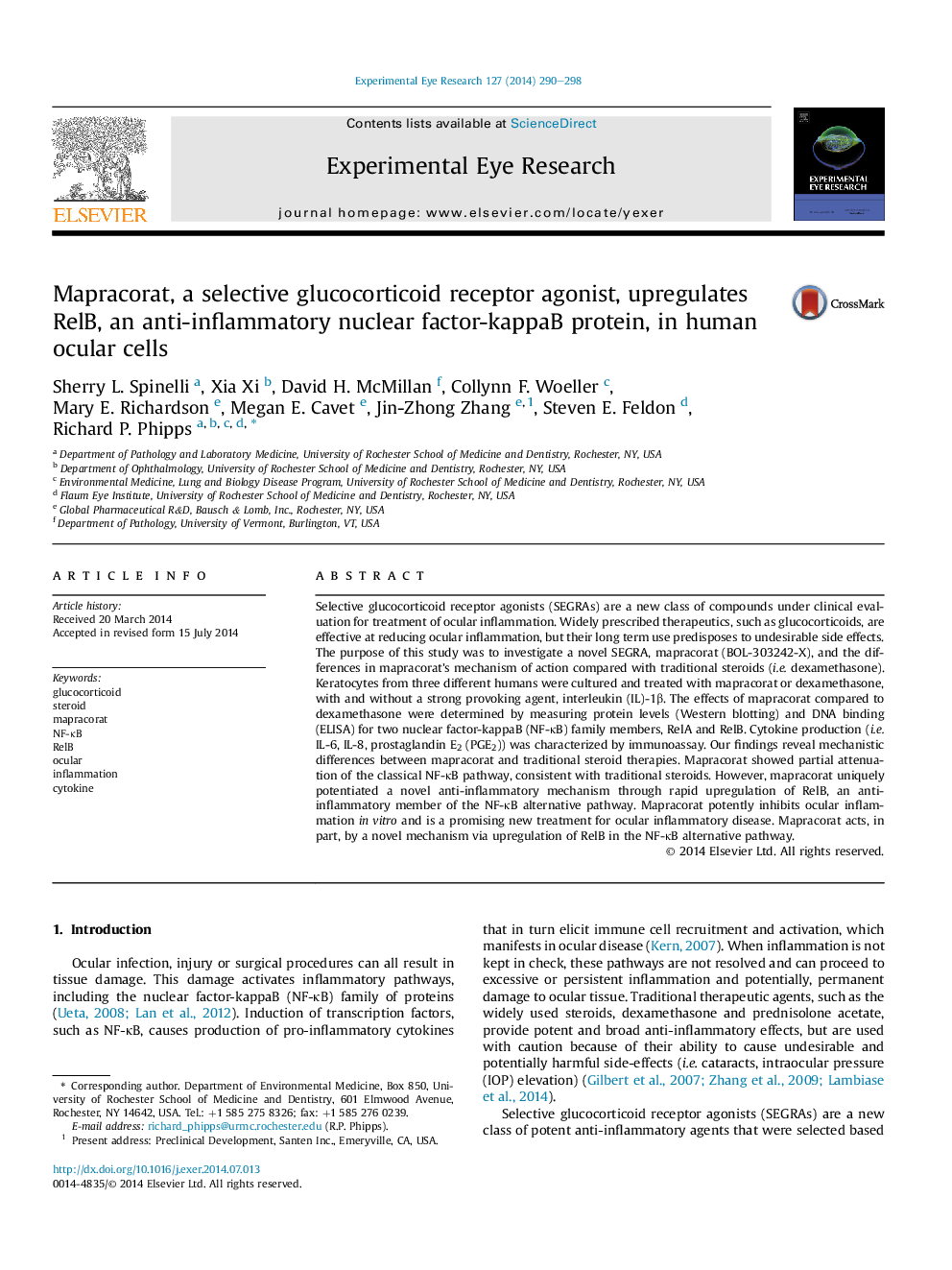| Article ID | Journal | Published Year | Pages | File Type |
|---|---|---|---|---|
| 6196828 | Experimental Eye Research | 2014 | 9 Pages |
â¢Mapracorat is a novel selective glucocorticoid receptor agonist that potently inhibits ocular inflammation in vitro.â¢Mapracorat acts, in part, by a novel mechanism via upregulation of RelB in the NF-κB alternative pathway.â¢There are mechanistic differences between mapracorat and traditional steroid therapies.â¢Mapracorat is a promising new treatment for ocular inflammatory disease.
Selective glucocorticoid receptor agonists (SEGRAs) are a new class of compounds under clinical evaluation for treatment of ocular inflammation. Widely prescribed therapeutics, such as glucocorticoids, are effective at reducing ocular inflammation, but their long term use predisposes to undesirable side effects. The purpose of this study was to investigate a novel SEGRA, mapracorat (BOL-303242-X), and the differences in mapracorat's mechanism of action compared with traditional steroids (i.e. dexamethasone). Keratocytes from three different humans were cultured and treated with mapracorat or dexamethasone, with and without a strong provoking agent, interleukin (IL)-1β. The effects of mapracorat compared to dexamethasone were determined by measuring protein levels (Western blotting) and DNA binding (ELISA) for two nuclear factor-kappaB (NF-κB) family members, RelA and RelB. Cytokine production (i.e. IL-6, IL-8, prostaglandin E2 (PGE2)) was characterized by immunoassay. Our findings reveal mechanistic differences between mapracorat and traditional steroid therapies. Mapracorat showed partial attenuation of the classical NF-κB pathway, consistent with traditional steroids. However, mapracorat uniquely potentiated a novel anti-inflammatory mechanism through rapid upregulation of RelB, an anti-inflammatory member of the NF-κB alternative pathway. Mapracorat potently inhibits ocular inflammation in vitro and is a promising new treatment for ocular inflammatory disease. Mapracorat acts, in part, by a novel mechanism via upregulation of RelB in the NF-κB alternative pathway.
